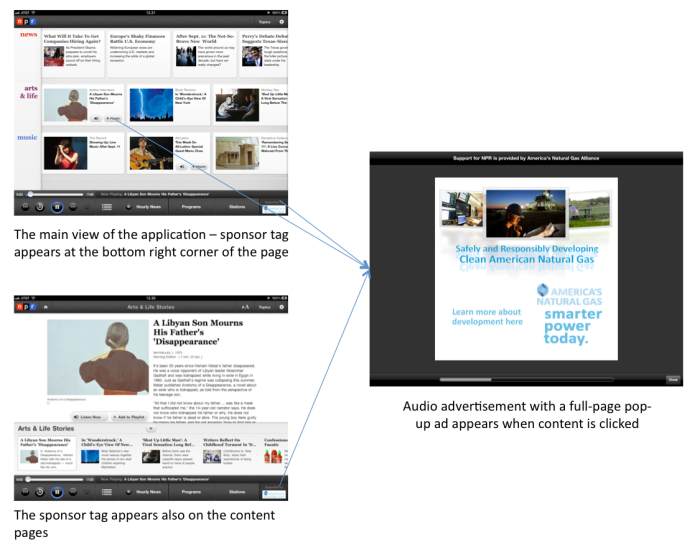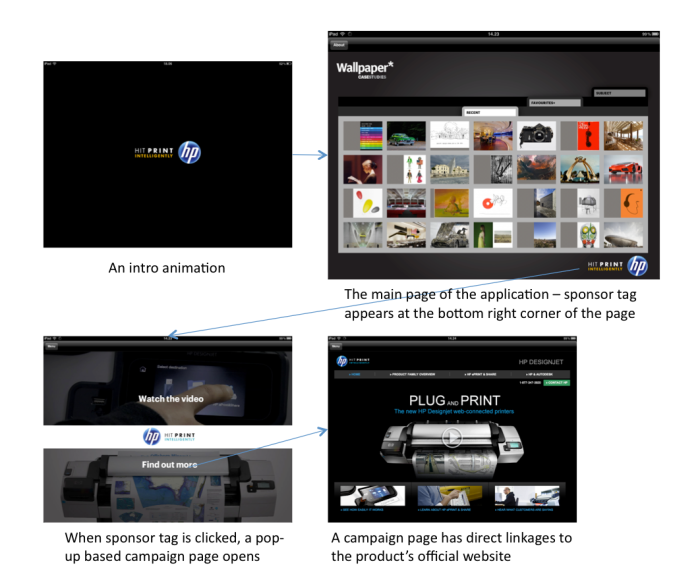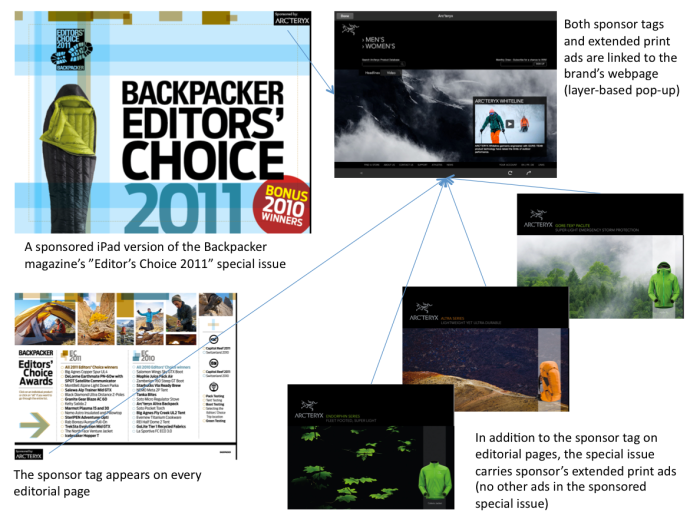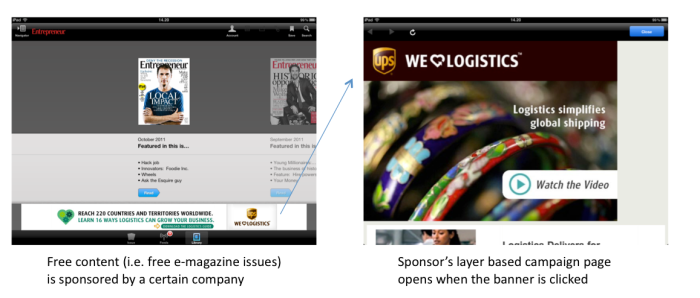Advertising Types in eReading/Tablet Context – Free Ad-Funded Content
A vast majority of publishing content – magazines and newspapers – in eReading and tablet medium operate on a pay basis. That is, even though most of eReading/tablet magazines and newspapers have advertisements within, the magazine or newspaper costs still for end customers. In these cases, the revenue model is congruent with the traditional print version where both advertising revenue and customer payments are utilized. In addition to this ‘traditional’, dualistic revenue model, publishers may also count on fully ad-funded content and, therefore, offer content to their customers free of charge. The concept of free ad-funded content is especially popular in online contexts where digital content is, to a great extent, funded by online advertising (cf. Papies, Eggers, and Wlömert 2011).
The concept of ‘free ad-funded content’ is somewhat close to the concept of ‘sponsored content’ (see previous article about Sponsored Content below), since in both cases the content is ‘sponsored’ by a commercial party. However, these concepts are not synonyms because in the case of free ad-funded content, the actual content is not initiated by the sponsoring (ad-funding) party. In case of free ad-funded content, the content is freely produced by the publishers and the purpose of the sponsoring company is to sponsor the content for consumers’ usage free of charge.
When publishers consider offering their content for free to certain distribution channels (e.g. tablet/eReading medium) and when the same content is sold in the other distribution channels (e.g. physical print magazine or newspaper), they face a trade-off between potential benefits and risks (cf. Papies, Eggers, and Wlömert 2011). According to academic literature, there are several benefits and risks related to free content distribution.
Potential benefits
- Attracting new customers: Free advertising-based content may attract new customers that would otherwise not use the product or service. Therefore, free content could create a “lift” in the overall number of consumers. (Papies, Eggers, and Wlömert 2011.)
- Fostering diffusion: Especially for new customers who may not have former empirical experience in tablet/eReading device-based magazines or newspapers, free content may be somewhat a risk-free option for them and encourage them to try the new medium platform. Since trialability (i.e. how easily a consumer can experiment the innovation before adopting it) is one of the key factors in the diffusion of any innovation (Rogers 2003), providing free content may be a critical factor in adoption and diffusion of tablet/eReading content.
Potential risks
- Cannibalization: The distribution of free content on certain channels may cannibalize the profits of other distribution channels (that operate on pay bases) (Papies, Eggers, and Wlömert 2011).
- Signaling of low quality: Consumers are likely to make inferences about the reasons behind companies offering free content; free content is often associated with inferior product quality which, in turn, may lead to lower valuation and reduced preference and attractiveness of content. This, in turn, keeps the number of adopters low. (Campbell 1999; Kamins et al. 2009.)
- Dislike of advertisements: Although the ad-funded models offer content free of charge, consumers have to “pay” for the content by exposing themselves to commercial messages. Therefore, consumers have to balance whether the utility of receiving free content is greater than the possible dislike effect in terms of advertisements. (Papies, Eggers, and Wlömert 2011.)
Next, we will go through some benchmark examples in which content is provided free of charge through an ad-funding affiliation:
NPR, as mentioned in the previous blog post, offers audio content free of charge through a commercial sponsor affiliation. In NPR’s application, all content is free for consumers and the presence of the sponsor can be noticed both in terms of visual content (i.e. sponsor tag and pop-up ad) and auditive content (i.e. radio-like audio ads). The varying sponsor is not associated with the content itself but, rather, solely enables free content for the tablet/eReading medium. This same content, however, is also available in NPR’s website for free but there the sponsor is different.
British lifestyle magazine, Wallpaper, utilizes two types of applications in tablet/eReading media; in addition to their e-magazine application, they have created a complementary application, Wallpaper Case Studies, which is built upon inspirational and entertaining photographic and video content. The magazine’s electronic application functions in a traditional way meaning that a consumer buys an issue for consumption. However, Wallpaper Case Studies operates on free ad-funded content where the high-quality and rich content is free for consumers. The presence of a commercial sponsor is done very discreetly; the presence of a commercial affiliation can be noticed only in the intro and on the main page of the application.
The idea of using multiple applications under one magazine or newspaper brand is extremely interesting in the sense that it offers a multitude of ways for utilizing advertising revenue. These revenue models do not need to be directly associated with the main product – that is, a newspaper or a magazine. For instance, a Finnish newspaper, Helsingin Sanomat, utilizes a similar solution where it not only provides readers with the actual newspaper application but also a commercially sponsored “HS.fi Kuvat” image application.
An outdoor magazine, Backpacker, offers the magazine’s special issue for free for readers whereas the normal issues of the magazine cost. In this case, ad-funding is utilized only in terms of this special issue in tablet/eReading context. As is it, exactly the same editorial content is offered in the magazine’s website without any linkages to the sponsor. Additionally, the physical version of the special issue is offered without any distinctive linkages to the particular sponsor. The Backpacker case provides a great example of how identical editorial content can be commercialized differently in different mediums. In this case, the same editorial content is provided in three places: in the physical print magazine, in magazine’s website, and in tablet/eReading context. Yet, every one of these media utilizes different advertising solutions; banners are utilized in the online environment, print advertisements in the physical magazine, and sponsorship affiliation in the tablet/eReading context.
Where Backpacker magazine offers a single special issue for free for its readers, the Entrepreneur magazine offeres all issues for free through a ad-funding. Even the latest issue of the magazine, that is being sold physically nationwide, is available free of charge in the magazine’s tablet/eReading application. The sponsor affiliation is evident in the magazine application; the sponsor has a banner at the bottom of the page. In terms of Entrepreneur magazine, it is noteworthy to consider that the publisher, apparently, trusts that the free ad-funded magazines in tablet/eReading medium do not cannibalize the profits of the physical magazines that operate on a pay basis.




Leave a comment